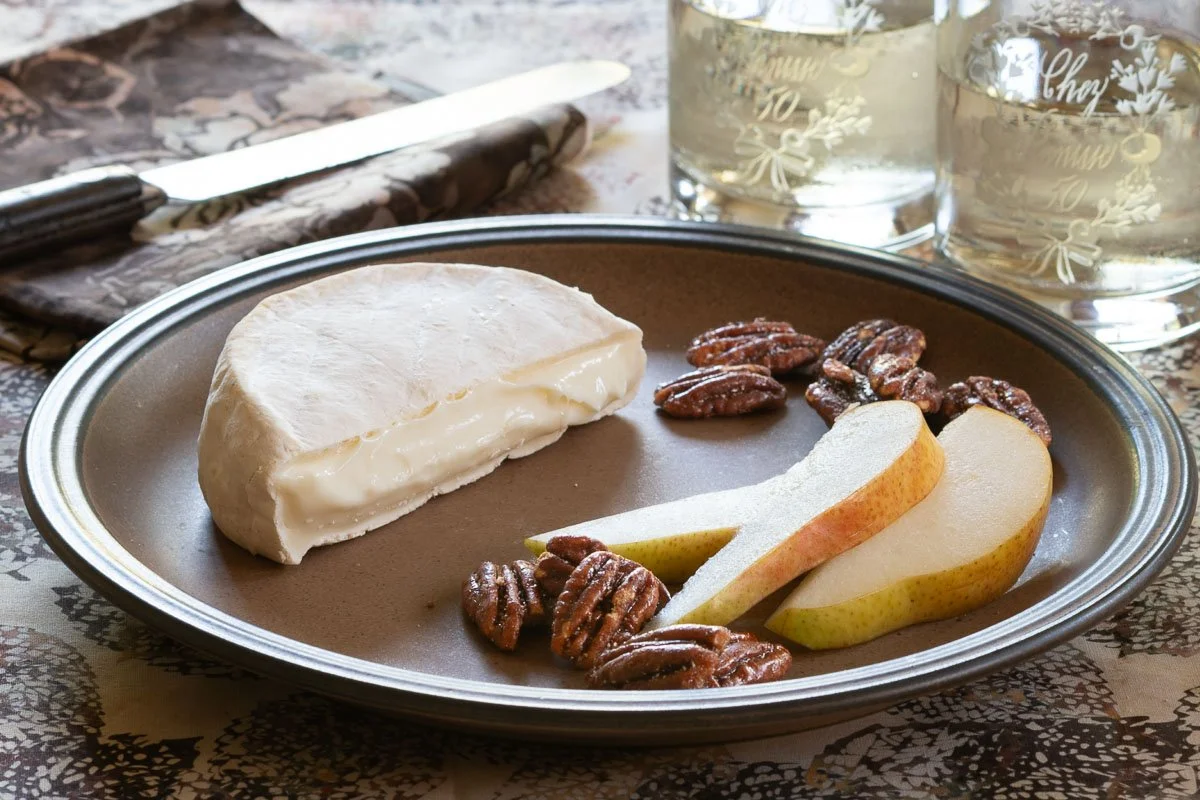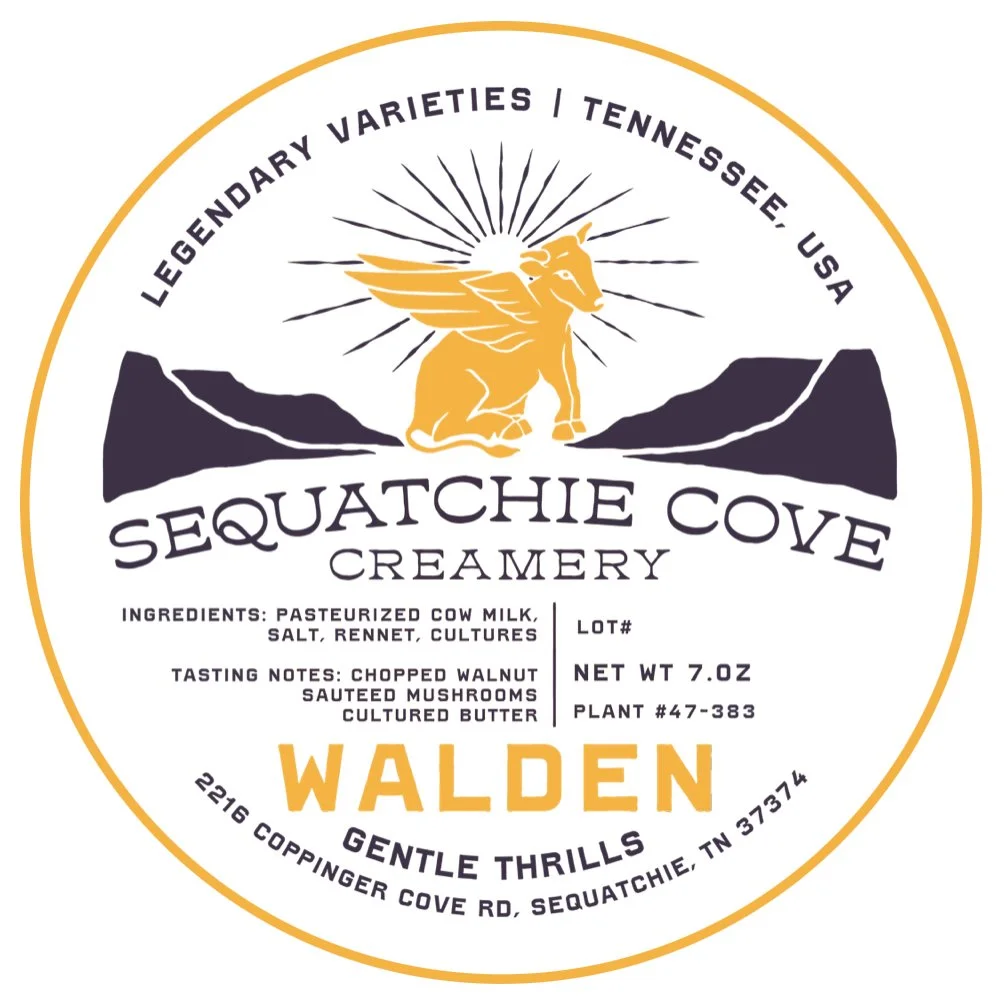A super-smelly Camembert (in a lidded box, no less) is the alpha male of my fridge right now. I close the door quickly but there’s no containing that scent. It’s for an upcoming tasting, where it will be divisive. (I love it.) The quieter little guy pictured above is better behaved but, if you ask me, just as enticing, with extra credit for being perfectly ripe. Just look at that texture. The aroma is impeccable, too—a subtle fragrance hinting at butter-cooked mushrooms and yeast. If you want a Camembert that comes out swinging, buy the other one. If you appreciate a more mannerly cheese that plays nice with wine, this one’s for you.
Sequatchie Cove’s Walden (above), introduced four years ago, is an unqualified success for this small Tennessee creamery. Batches are spoken for before they’re even made, says Padgett Arnold, co-owner with her cheesemaker husband, Nathan. Yet Walden is so labor intensive and low margin that the couple have capped the production. If you love it as much as I do, we’ll need to agitate for more.
Padgett and Nathan Arnold
Walden is a revamp of the now-retired Dancing Fern, another Sequatchie Cove cheese that, despite its acclaim, had shelf-life issues. Made with raw milk, it had to be aged at least 60 days—that’s the law—which left retailers with little time to sell it before it went south. We consumers don’t often think about these logistical matters, but they can tank a cheese.
Walden is made with pasteurized milk—Holstein milk from a nearby dairy—so it can be released after two weeks, well before its texture and flavor fully blossom. But now it can travel cross country and still have weeks of sales life. Eight weeks or so is “the sweet spot,” says Arnold, who worries that her local customers consume it too soon. “Some people may never know how good Walden can get because it doesn’t sit around long enough,” she says. “It has a very long arc.”
The wheel pictured above was nine weeks old and I know that because the package had a Julian date of 25232. That five-digit number tells me the cheese was produced on the 232nd day of 2025—or August 20. Arnold resists putting a “best by” date on Walden “because there’s no real point at which it’s not good anymore,” she says, but you can use the Julian date to guide you to ripeness.
Stylistically, Walden is a bit of a hybrid. Nathan’s original inspiration was Reblochon, a French raw-milk washed-rind cheese. He does wash the disks with brine multiple times, but he also encourages the Geotrichum mold that produces the thin white rind. Walden is more delicate than Reblochon, not as garlicky and earthy. The creamery’s notes describe aromas of chopped walnuts, sauteed mushrooms and cultured butter. I find all that, plus a yeasty, bread-dough fragrance. The texture is supple and silky, and the salting is, to my taste, exactly right.
Pour a not-too-heavy white wine with this elegant cheese, perhaps a Riesling, Grüner Veltliner or unoaked Chardonnay. Sparkling wine or sparkling dry cider also seem right. Look for Sequatchie Cove Walden at these retail shops.



